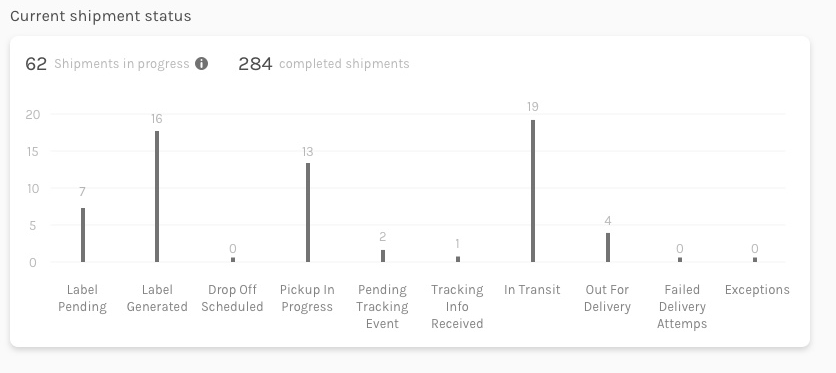There was considerable culture shock when these comic book fans began to discover the giant robot TV cartoons on Japanese community TV during 1976. The VCRs enabled them to record sample episodes of Brave Raideen, Getta Robo-G, and UFO Dai Apollon, and bring them to their comic book and science fiction fan clubs to show off. They were usually introduced with some variant of, "You'll never believe what they can get away with in cartoons in Japan! Other factors over the next few years intensified the attraction of Japanese animation.
One was the arrival on the American toy market of the complex transforming model robots and science-fictional vehicles, both in imports from Japan and in Mattel's licensed Shogun Warriors action figures starting in 1978. The Shogun Warriors were supported by a licensed comic book produced by Marvel Comics.9 Many Americans' first exposure to Japanese animation was through these American-produced toys and the comic books based on them. This made people more receptive to the videotaped episodes of Japanese TV cartoons that were being shown at American comics fan clubs. Many Japanese live-action and animated horror movies of the 1980s and '90s have been based on Kikuchi's novels. The author is known for, every couple of months, hosting all-night seminars for horror fans at a bar near his Tokyo home. The 1980s were a decade of transition for Japanese animation, and the first Vampire Hunter D was notable in several respects.
It was one of Japan's earliest animated releases aimed blatantly at the older teen/adult market rather than for children or families. It was one of anime's first treatments of European horror mythology rather than boys'-adventure science-fiction or traditional Asian horror-fantasy. Animation allowed Vampire Hunter D to present frightening monsters and breathtaking fantastic action that would have looked embarrassingly laughable in a lowbudget live-action film.
Vampire Hunter D was a hit with horror-movie fans in Japan in the late 1980s. It was also popular with horror and anime fans as one of the earliest anime releases in America, on the fine-art theatrical circuit and home video in 1992 and on The Sci-Fi Channel in 1993. Its technical quality compared favorably with videos of TV animation and direct-to-video releases, but not with most animated theatrical movies. Ironically, one of the animated features that it suffered next to was another horror thriller based on a novel by Kikuchi, Wicked City, produced at the new Madhouse studio by director Yoshiaki Kawajiri, released in April 1987.
Kawajiri's directorial debut had been Lensman, a Star Wars-imitation space opera based on an American 1930s SF novel, three years earlier. Wicked City, a Stephen King-type modern urban horror fantasy, was his second theatrical feature. It set Kawajiri's reputation as a major directorial auteur of sophisticated animated suspense. His productions for the next decade were dominated by adult thrillers set in a high-tech future or in a Japanese historical landscape haunted by mythological monsters. At this same time, Kikuchi's reputation as a horror writer was also growing, and his original Vampire Hunter D novel was followed by several sequels.
Fan demand for another movie, "done right" , started developing. This has reached the point that major American animation presenters with Japanese titles in their lineups are trying to disassociate themselves from the "anime" label. It's not effects-driven or violence-driven." Mike Lazzo, vice president of programming for the Cartoon Network, assured the public in USA Today, December 18, 1997, that anime is not shown on American TV. "Japan animation is so different from what airs here . Around 1994 the anime videos expanded into the major video massmarket chains and became accessible to the general public, which tends to assume automatically that all animated cartoons are safe for children. This resulted in the necessity for warning advisories on the video boxes such as "Contains violence and nudity," "Contains brief nudity and mature situations.
Parental discretion advised," and "Recommended for mature viewers." But these did not yet include explicit sexual titles. Video stores in Japan have "anime" sections as well, but they are much larger since they include many titles that have not been sold to international markets. The average video store bases its orders on the expected popularity of each title, but there is usually a standard minimum order for 100 units of every animation title.
Unless a title is unusually popular, it is not re-ordered. There are enough new animation releases each month to keep the shelves filled. Therefore most general video stores have a constant turnover and only the newest animation videos can be found.
Shoppers who want older titles or a wider range of selections can find animation specialty video shops in most cities. These are similar to comic-book shops in America, catering to the older teens and "young salarymen" who are the market for the action/ adventure direct-to-video titles. Sell-through prices for the mass-marketed family titles, such as Disney's, are in the ¥3,000/$25 range. A major television cartoon series may offer four half-hour episodes for ¥7,000/$60 on its initial release, while the series is still topping the television popularity charts. Video rereleases a few years later drop to the ¥3,000 level. New direct-to-video releases (known as OAV titles, for "original animation video"), usually in the half-hour to forty-five-minute range, cost ¥5,000/$45 to ¥6,000/$55.
Up to now, Japanese video releases of major theatrical animated features such as Akira, Ghost in the Shell, or Miyazaki's movies have been limited to rental prices in the ¥10,000/$85 to ¥16,000/$140 range. It will be interesting to see how Disney's marketing of Miyazaki's features will affect the entire range of theatrical animated feature videos. For the public which prefers to rent rather than own, overnight rentals of videos are comparable to American prices; ¥200/$1.75 to ¥300/$2.50. ¥500/$4.25 is standard for a two-night rental of a popular new title.
The animation video market in Japan is large because the Japanese video market in general is huge. In addition, the Japanese public does not share the American preconception that "animation is just for kids," so there is no loss of face for teens or adults to buy or rent cartoon videos for themselves. 1978, the French version of UFO Robot Grandizer made news around the world by getting a 100 percent rating for several weeks.
This meant that no one in the country was watching anything else during that half-hour. This has cut into his drawing time, but he is still very active. In 1984, nostalgia for Mazinger Z led to a new manga and anime series, God Mazinger.
Today he is involved in the development of animation for the new OAV market. One of these projects is a faithful remake of Devilman. Toei Animation's 1972 TV adaptation had seemed outrageous at the time, but it was considerably toned down from the manga, and is rather mild by today's animation standards. The new five-part video series will bring Devilman to life as Nagai originally wrote it. An entirely new series is Fandora, an erotic comedy-adventure about a nymphet interstellar bounty hunter. Go Nagai, in his early forties, is still a major creator in Japan's comic-art field.
Nagai began his career drawing humorous children's comics and has always produced a wide range of manga and animation concepts. One of his lesser TV products is the bland Chicle, The Young Witch, notable for an unexpected guest appearance by Warner Brothers' Tweety Pie in the closing credits. But his reputation for sex and violence is one of which he is proud.
A recent manga series set in a brutal post-holocaust world is titled Violence Jack. Two albums of illustration have been published; one is titled Go Nagai and His Wild World of Violence, the other, of his horror-fantasy series, is The Psychic World of Go Nagai. Nagai's true interest is raw power, both physical and emotional. His characters tend to be massive, thickly muscled, visibly radiating sheer energy, their loves and hates transcending time.
Even the heroic robots inspire awe and nervous reverence rather than a feeling of ease. His heroes rarely relax; they constantly feel responsible for the fate of the whole world. This dynamism has made Go Nagai's comics attractive even for Americans who have never really been able to read them. Up to now, Nagai's sole American appearance was in the June 1983 issue of Epic Illustrated. But knowledgeable Americans have long sought out his work on their own. The 1982 first issue of Joshua Quagmire's Cutey Bunny funny animal satire acknowledged, "Incidentally, the name Cutey Bunny is a rather obvious pun.
Obvious, that is, if you happen to be a fan of Japanese comics." And the third issue of Peter Gillis's and Tom Artis's Tailgunner Joe shows a "Go Nagai" model-name on a "Maximum Lethal Violence" highway juggernaut. 1980s, stricter standards for children's TV programming brought complaints against Speed Racer for violence, such as when gangsters would shoot at people or knock them unconscious or a brutal parent would abuse his child. However, as the 1980s progressed, Speed Racer gained an independent life. The home video market made Speed Racer available unedited without the restrictions of modern TV standards.
In 1987, a new Speed Racer comic book was licensed which has become even more hard-boiled than the TV version. A second group, The Swamp Zombies, has recorded its own Speed Racer song, while a hot dance version of the theme song, "Speed," has been re-scored by Chicago's Alpha Team Group. For years rumors of a forthcoming Speed Racer live-action theatrical feature have come out of Hollywood, and they're getting more insistent. And now there is to be both a brand-new Speed Racer TV cartoon series, and a theatrical release of the original animation. It looks like, for Speed Racer, the finish line is nowhere in sight. In June 1984 Harmony Gold started production of a pilot feature of Macross.
The usual television industry practice is to make a quick, cheap translation of the first episode of a foreign cartoon so that TV station buyers can understand the story. If the program is sold, then the pilot episode is redone more carefully. Macek's approach was to make a high-quality pilot at the outset. Not just a single episode, either, but the first three episodes, edited together into a seventy-minute feature. This would give Harmony Gold more than just a pilot to show to TV executives. It would create a feature which could be sold on the home video market right away.
Also in June, Harmony Gold sent out feelers to comic book publishers to generate interest in a Macross comic book. Macek strongly believes that any worthwhile adventure TV series or movie should also appear as a comicbook series. The different formats will reinforce each other, building up the readers and viewers of both. However, Macek did not want to relinquish the degree of creative control that is traditional when one of the major publishers produces a tie-in comic book. For this reason Harmony Gold's solicitation was sent to only the independent comics publishers.
The only one that replied was Comico, the Comic Company. Comico liked what it saw of Macross, and it was willing to leave the writing of the comic book in Macek's hands. By the end of June, serious production of both the first cartoon video cassette and the first issue of the comic book had begun. II. However, they were hampered for the next decade by the slow recovery of the Japanese economy. They also found their amateur films competing with the polished cartoons from American studios, which poured into Japan with the Occupation forces. The first Japanese full-color animation did not appear until 1955.
It soon became clear that the future of Japanese animation lay in adopting the Western studio system. Its earliest leading animator, Yasuji Mori, directed Toei's first notable short cartoon, Doodling Kitty, in May 1957. But to the general public, Japan's entry into professional animation came with the company's first theatrical feature, Panda and the Magic Serpent, released in October 1958. Toei's first few features followed the Disney formula very closely. They were produced a year apart; they were based upon popular folk tales— Asian rather than European—and the heroes had many cute, funny-animal companions. The first six were distributed in America, usually a couple of years after they were first shown in Japan.
Unfortunately, these were not successful in the United States and Japanese theatrical animation disappeared from America for the next two decades—unless it could be sold to TV as an afternoon children's movie. Otaku are drawn to anime, manga, science fiction, and computers because they are subjects that are dense and information rich, enabling otaku to immerse themselves in a rich knowledge economy. Otaku knowledge requires immersion in not only information and media but also in ongoing social exchange about topics of interest. Particularly for overseas fans, much of their knowledge and media content is gained through contact with other fans instead of or in addition to commercial or professional sources. This was certainly the case in the early years of the fandom, directly influencing the landscape of fandom in the present day.
Contrary to the stereotypical image of the otaku as socially isolated, anime fan communities are highly social and networked, relying on a combination of online and offline connections. This chapter describes the ways in which the U.S. anime and manga fandom originated and evolved from the 1960s to the present, focusing on the social networks and exchanges among fans that have been the bedrock of this evolving fan scene. After first outlining a history of the anime fandom in the United States, the chapter focuses on the current state of otaku networks that include local networks, online networks, and conventions. The commitment to minimize discrimination, hierarchy, and authority and to ensure diversity embodies the core principle created by Comic Market, and it is now shared among doujin markets.
In addition to Comic Market, other means of doujin distribution have proliferated through the years, such as other doujin markets, consignment bookstores, and online sales. From a distribution standpoint, Comic Market's founding goal of constructing a self-made distribution network has been realized. Doujin also evolved into a medium not only for original works and new means of self-expression in manga but also for various forms of expression in otaku culture such as parody doujin, games, and music.
This evolution of doujin as a multicontent medium was not enabled and nurtured through the power of a distribution infrastructure alone but through the creativity of doujin artists and the consumers, the otaku. As a distribution infrastructure, Comic Market maintains an open stance to all content and allows circle and general participants to shape the evolution of doujin content. Under the auspices of this approach, which differs markedly from commercial marketing, many artists and works have been born and have advanced doujin culture. With a clear purpose from its inception, Comic Market succeeded in concretizing its mission into a rational system and in cultivating a distinct doujin market style. Comic Market's operations embody the principles and goals of its founders thirty years ago. Within that space for self-expression, approximately 35,000 circles gather twice a year to distribute doujin in massive quantities.
Comic Market built an alternative market system that maintains diversity and provides otaku with an easy means of self-expression. The connection between manga and anime is closer than that between American comic books and animated cartoons. Many anime TV series, OAVs, and theatrical features are based on Japanese comic books. Translated Japanese manga appeared in U.S. comic-book form in 1987 and became a distinct genre within the comic-book industry by the early 1990s. Fans of comic books like Gunsmith Cats, Ranma 1/2, and Oh My Goddess are led to the corresponding anime videos and to other anime from there.
One of the most popu lar events in any major North American con is the AMV competition, featuring videos in which fans edit anime to a soundtrack of the editor's choosing. Generally this soundtrack is popular Euro-American music, but it could also be the soundtrack to a movie trailer or dialogue from a TV show, movie, or fan-created script. Fans wait in long lines to get into the AMV screenings of the larger conventions, and they receive ballots to vote on the viewers' choice awards. AMV editors showcase their most recent videos, organized by genre such as action, drama, parody, or technical. The videos vary from dramatic character profiles to celebrations of fight and action sequences to videos that are an amusing commentary on the anime fandom itself.
The editorial virtuosity of these winning videos rivals and often exceeds that of professional music video production. The PlayStation Portable Wireless Local Area Network enables players to make ad hoc connections with other portable game devices in the vicinity and to play together. Broadly speaking, fighting games can be grouped into 2-D and 3-D subcategories. The difference between these two subcategories is analogous to the difference between fantasy and realistic representation. Games in the 2-D category target gamers who want to take advantage of the virtual medium to enjoy fantastic battles involving superpowers . Games in the 3-D category target gamers who enjoy high-fidelity realistic street fights.
Games in the former subcategory are typified by the Street Fighter series, the latter by the Virtua Fighter series. The issue of realism applies to the characters' movement or motion; clearly a battle between a sumo wrestler and a Tai Kwon Do expert is not fundamentally reality based. Some players have persuaded game-center employees to reserve a machine for them for protracted training sessions, while others have bought their own machines to conduct research at home. Initials in transcript are the first letter of the infor mant's name.



























No comments:
Post a Comment
Note: Only a member of this blog may post a comment.